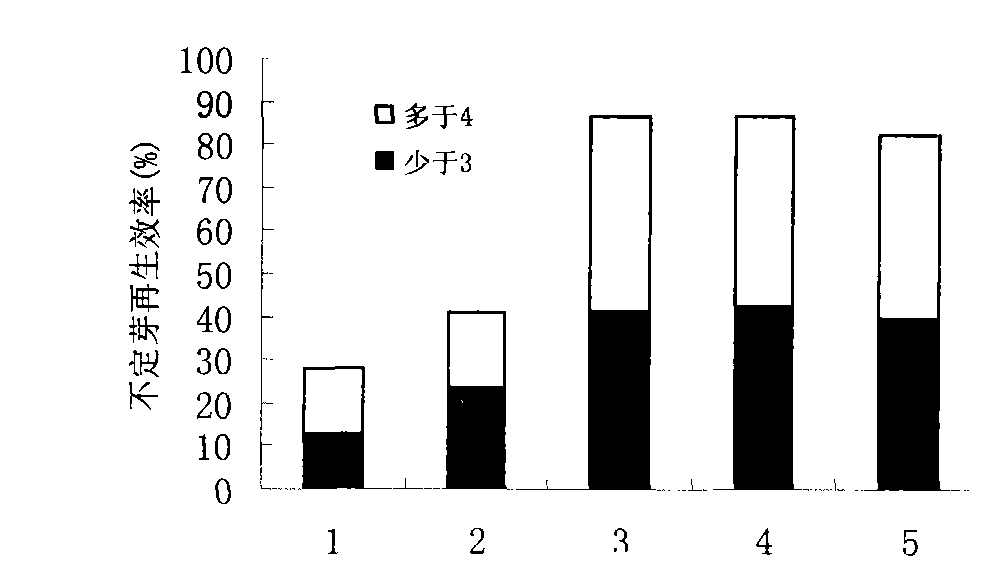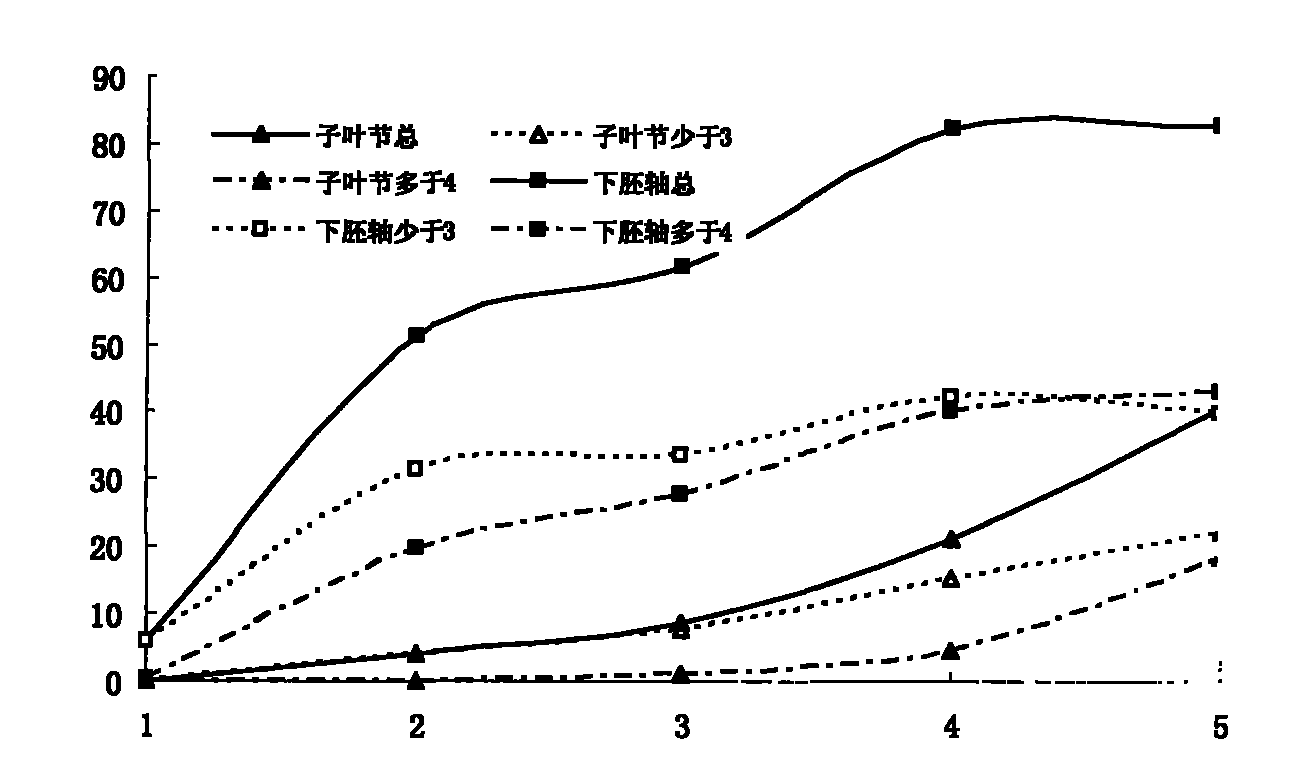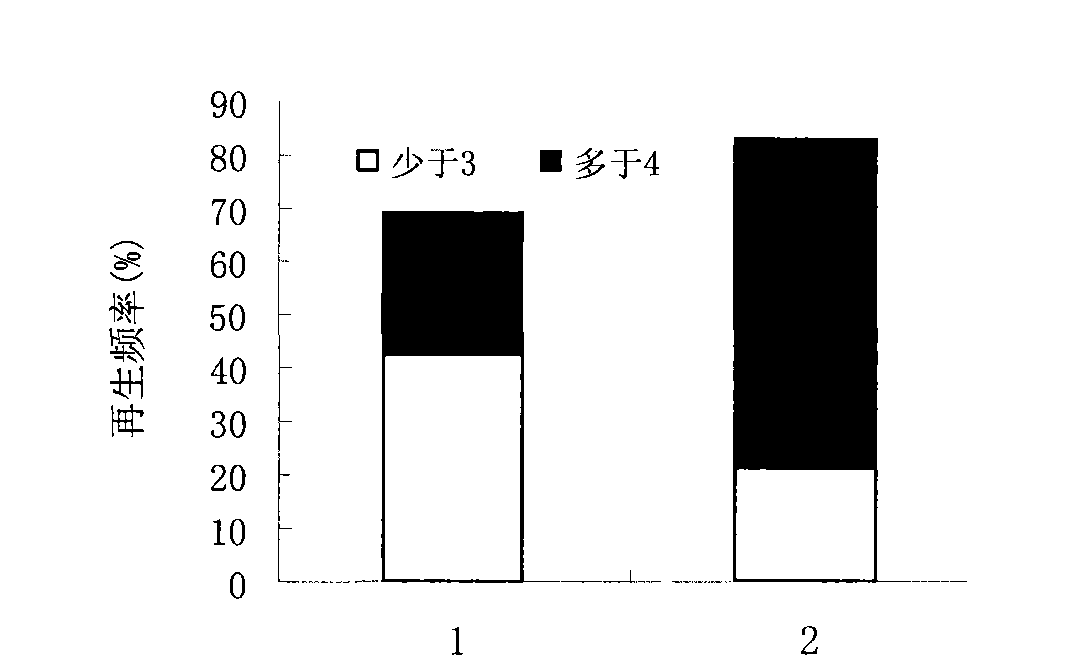Genetic transformation method for soybean
A genetic transformation method and soybean technology, applied in the field of soybean genetic transformation, can solve the problems of poor repeatability, difficult regeneration of soybean tissue culture, and large differences in transformation frequency.
- Summary
- Abstract
- Description
- Claims
- Application Information
AI Technical Summary
Problems solved by technology
Method used
Image
Examples
Embodiment 1
[0054] Embodiment 1, the influence factor that soybean hypocotyl regeneration plant obtains
[0055] 1. The effect of BAP concentration on the frequency of hypocotyl regenerated adventitious buds
[0056] 1. Obtaining recipient soybean hypocotyls
[0057] Test material: Soybean (Glycine max) Heinong 44, recorded in Man Weiqun, Du Weiguang, Chen Yi, Luan Xiaoyan, Liu Xinlei, Wang Fengli, Breeding of a new soybean variety Heinong 44 and the effects of different planting methods on its yield and quality, Heilongjiang Agricultural Sciences, 2004, 5:1-3, in, publicly available from Institute of Botany, Chinese Academy of Sciences.
[0058] Surface sterilization of soybean seeds: select disease-free and plump soybean seeds and spread them on an open petri dish, put them into a desiccator with a beaker of 100mL sodium hypochlorite stock solution, then slowly add 4mL concentrated hydrochloric acid along the beaker, and seal the desiccator , placed in a fume hood to sterilize for 18 ...
Embodiment 2
[0246] Embodiment 2: transfect pCAMBIA2301 plasmid soybean plant and the expression of GUS gene in hypocotyl
[0247] 1. Obtaining of soybean plants transformed with pCAMBIA2301
[0248] method one:
[0249] 1. Obtaining recipient soybean hypocotyls
[0250] 1) Test material: soybean (Glycine max) variety: Heinong 44
[0251] 2) Surface sterilization of soybean seeds: select disease-free and plump soybean seeds and spread them on an open petri dish, put them into a built-in desiccator containing a beaker of 100mL sodium hypochlorite stock solution, then slowly add 4mL of concentrated hydrochloric acid along the beaker, and seal it tightly. Desiccator, placed in a fume hood to sterilize for 18h. The sterilized seeds were placed in the germination medium (1 / 2 MS basic medium + 15,000mg / L sucrose + 7,500mg / L agar, pH 5.8), placed at 25°C, 120μEm -2 S -1 Under the conditions of light intensity (light cycle 18 / 6h), cultured for 5 days.
[0252] 3) Preparation of explants
[...
PUM
 Login to View More
Login to View More Abstract
Description
Claims
Application Information
 Login to View More
Login to View More - R&D
- Intellectual Property
- Life Sciences
- Materials
- Tech Scout
- Unparalleled Data Quality
- Higher Quality Content
- 60% Fewer Hallucinations
Browse by: Latest US Patents, China's latest patents, Technical Efficacy Thesaurus, Application Domain, Technology Topic, Popular Technical Reports.
© 2025 PatSnap. All rights reserved.Legal|Privacy policy|Modern Slavery Act Transparency Statement|Sitemap|About US| Contact US: help@patsnap.com



